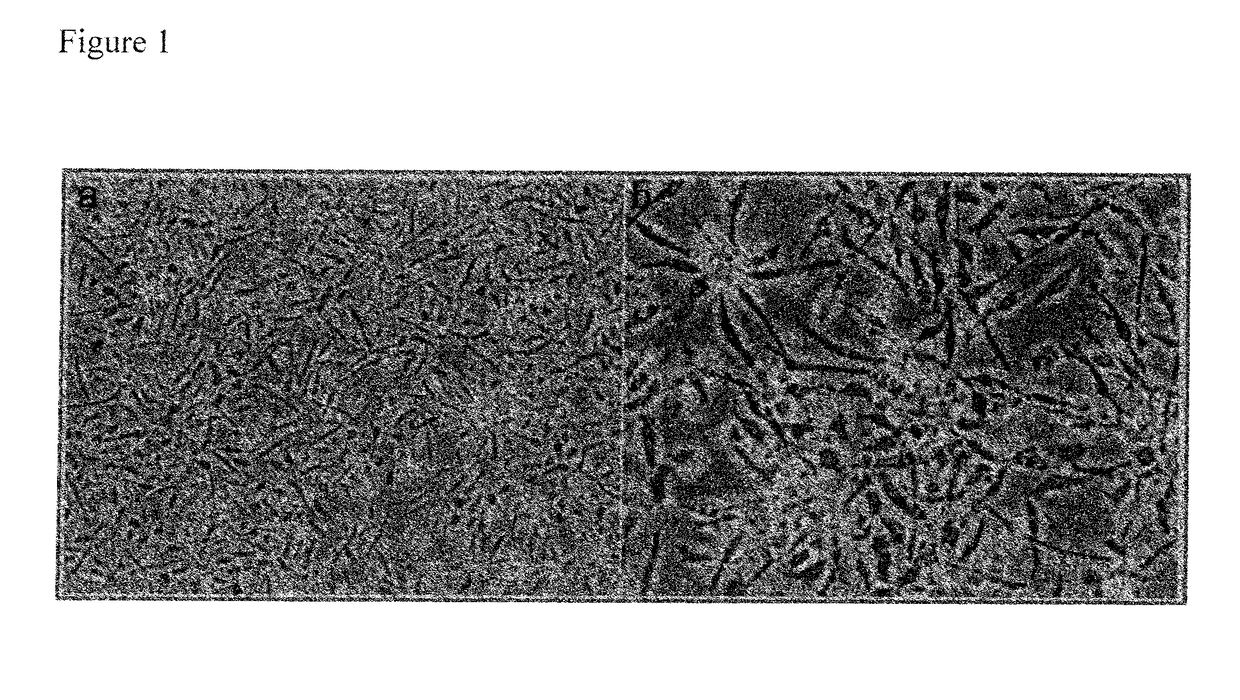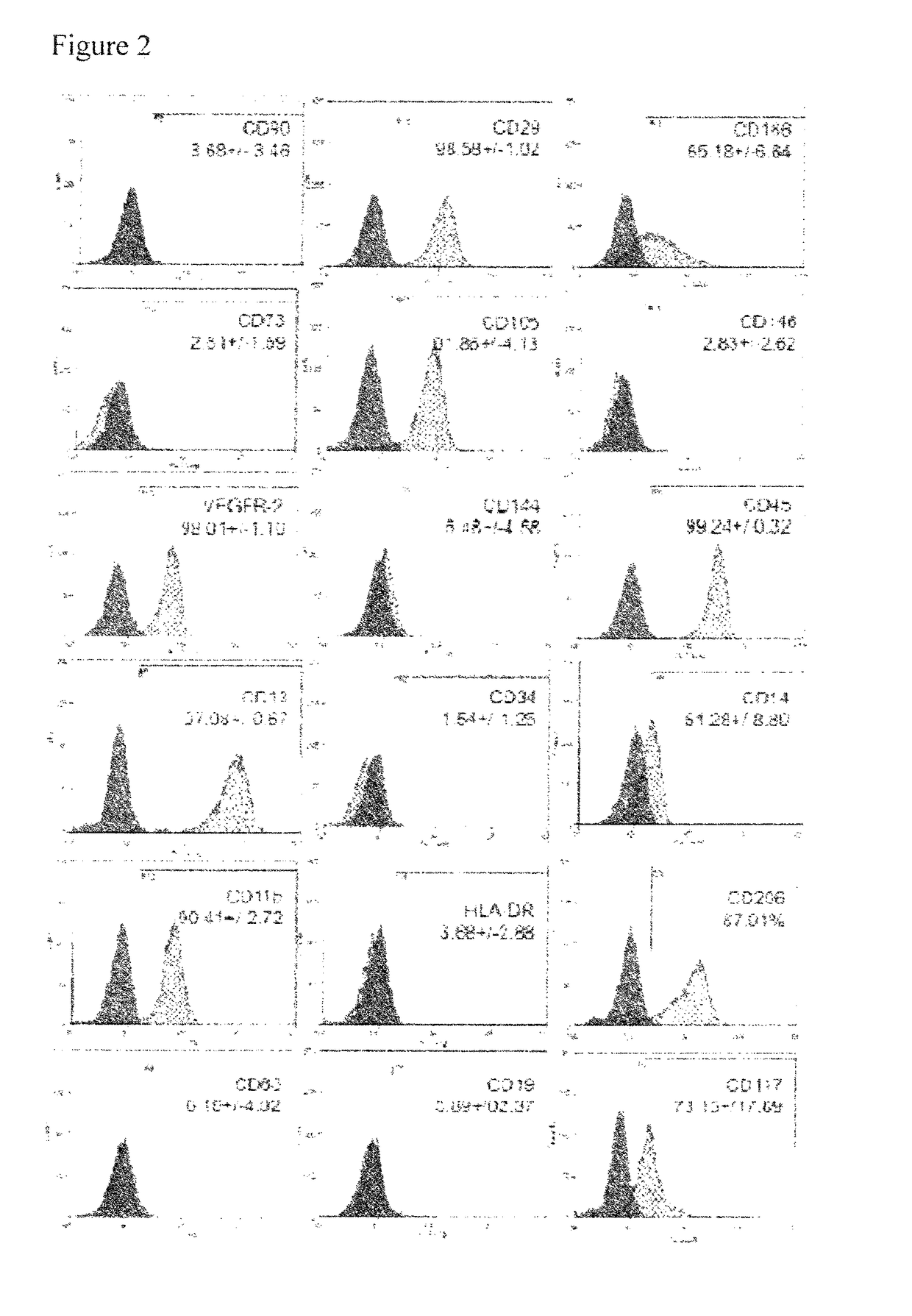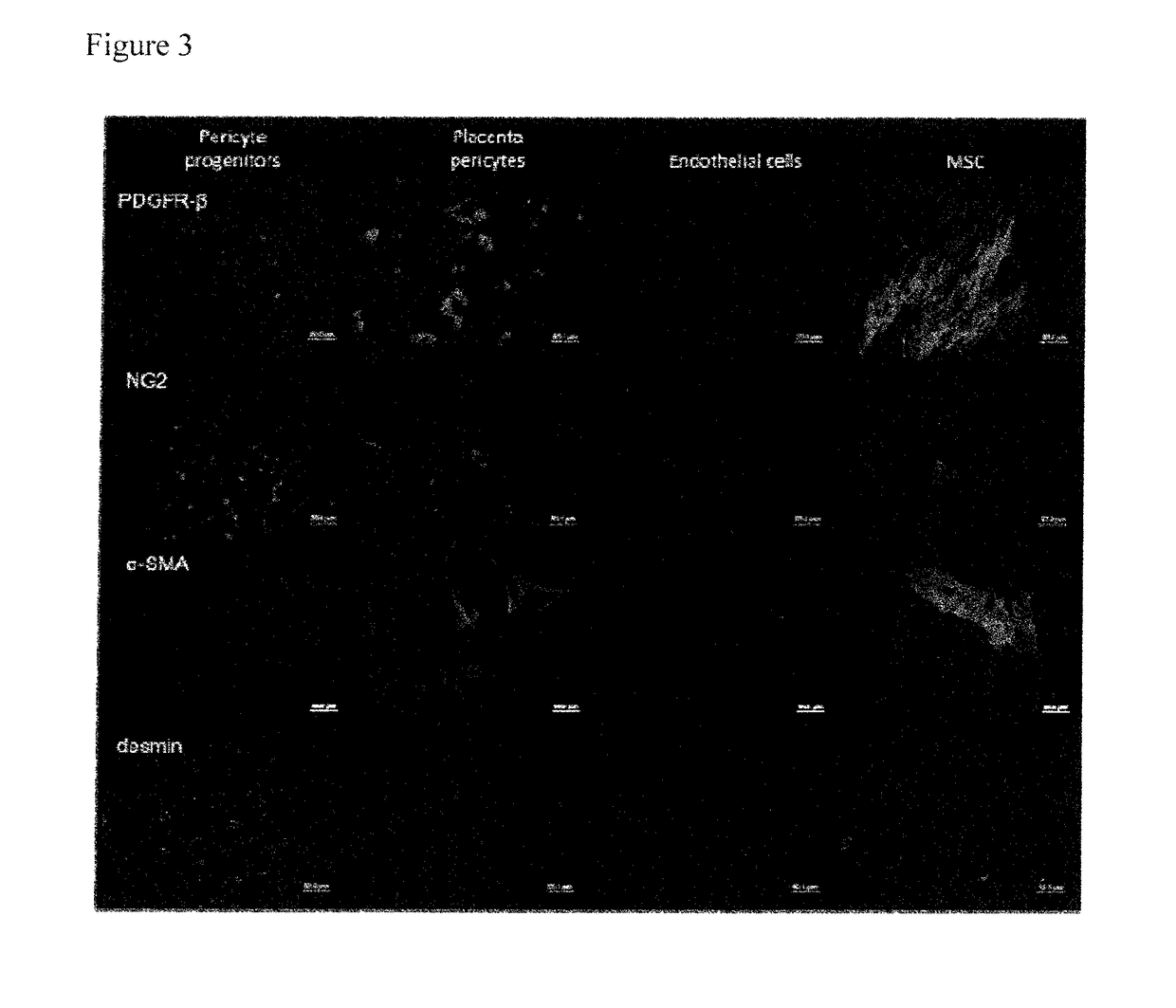Pericyte progenitors from peripheral blood
a technology of pericyte and progenitors, applied in the field of pericyte progenitors from peripheral blood, to achieve the effects of boosting the proliferation of msc, enhancing the differentiation response of msc, and enhancing matrix deposition
- Summary
- Abstract
- Description
- Claims
- Application Information
AI Technical Summary
Benefits of technology
Problems solved by technology
Method used
Image
Examples
Embodiment Construction
[0027]Pericytes originate from bone marrow, but whether they can be assigned to the mesenchymal or haematopoietic lineage is currently a matter of debate. Dhar et al. (Dhar et al. 2006 Mol Cancer 5(9):209 showed that mouse embryonic MSC, when induced by tumor-cell derived conditioned medium, can be differentiated into cells expressing pericyte marker α-SMA and desmin and attach to formed vessels in vitro and in vivo. Furthermore, it was demonstrated that pericyte isolated from various human organs like skeletal muscle, pancreas, adipose tissue and placenta lack haematopoietic and mature endothelial cell markers, share markers with MSC in vitro and in vivo and can differentiate in various mesenchymal lineages like adipocytes, osteoblasts and chondrocytes (Crisan et al., 2008 Cell Stem Cell, 3:301-313, reviewed by Corselli et al. 2010 Arterioscler Thromb Vasc Biol, 30(6):1104-1109). It is currently accepted that pericytes give rise to or indeed are MSC.
[0028]In contrast, other work ha...
PUM
| Property | Measurement | Unit |
|---|---|---|
| concentration | aaaaa | aaaaa |
| molecular weight | aaaaa | aaaaa |
| concentration | aaaaa | aaaaa |
Abstract
Description
Claims
Application Information
 Login to View More
Login to View More - R&D
- Intellectual Property
- Life Sciences
- Materials
- Tech Scout
- Unparalleled Data Quality
- Higher Quality Content
- 60% Fewer Hallucinations
Browse by: Latest US Patents, China's latest patents, Technical Efficacy Thesaurus, Application Domain, Technology Topic, Popular Technical Reports.
© 2025 PatSnap. All rights reserved.Legal|Privacy policy|Modern Slavery Act Transparency Statement|Sitemap|About US| Contact US: help@patsnap.com



